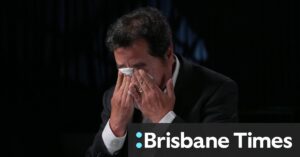
Donald Trump’s recent letter to Japanese Prime Minister Shigeru Ishiba has sparked widespread criticism, with many comparing its language to that of a schoolchild. The letter, which announced a 25 percent tariff on Japanese goods, has been described by some as resembling a composition by a fifth grader.
The announcement comes as the United States continues to impose tariffs on various countries, a strategy Trump has employed throughout his presidency. The letter to Japan, however, stands out not just for its content but for its style, which many have found lacking in sophistication.
Critics have pointed out the letter’s excessive use of capital letters, with phrases like “Number One Market in the World” and “TRADE” appearing as though they were movie titles or shouted proclamations. This stylistic choice, coupled with numerous grammatical errors, has led to a flurry of reactions on social media and beyond.
Public Reaction and Criticism
Reactions to the letter have been swift and largely negative. One commentator noted seeing “so many grammatical errors in this letter, it would not pass a first-year English class,” while another described it as “painful to read.” A third person remarked, “Words fail him,” suggesting that the letter would be heavily marked up if submitted to a teacher.
Some have gone further, suggesting that comparing Trump’s writing to that of a fifth grader is an insult to fifth graders. Others have expressed concern over the letter’s content, particularly the implications of renewed tariffs and the apparent misunderstanding of trade deficits.
“Christ,” was the simple, yet telling reaction of one reader, capturing the exasperation felt by many.
Historical Context and Communication Style
This isn’t the first time Trump’s communication skills have been scrutinized. An analysis of his speeches during the 2024 election revealed that he often spoke at a fifth to sixth-grade level, which, while aligning with the average American reading age, raises questions about the appropriateness of such language in diplomatic correspondence.
While some argue that simple language can be effective, especially in political speeches, letters to foreign leaders typically demand a higher level of formality and precision. The casual tone of Trump’s letter to Prime Minister Ishiba contrasts sharply with the gravity of its content, which involves significant economic policy decisions.
Implications for US-Japan Relations
The letter’s content, beyond its style, signals a potential escalation in trade tensions between the United States and Japan. By threatening additional tariffs should Japan retaliate, Trump has set the stage for a possible trade war, reminiscent of past economic standoffs.
Experts warn that such measures could have far-reaching consequences for both economies. According to Dr. Emily Chen, an international trade analyst, “The imposition of tariffs could disrupt supply chains, increase costs for consumers, and strain diplomatic relations.”
Dr. Chen adds, “It’s crucial for both nations to engage in constructive dialogue to resolve trade disputes without resorting to punitive measures.”
Looking Ahead
As the August 1, 2025, deadline for the tariffs approaches, all eyes will be on the responses from both governments. Japan’s reaction to the letter and its subsequent actions will be pivotal in determining the future of US-Japan trade relations.
Meanwhile, the criticism of Trump’s letter serves as a reminder of the importance of clear and effective communication in international diplomacy. As the world watches, the hope is that future correspondence will reflect the seriousness of the issues at hand and foster mutual understanding between nations.





